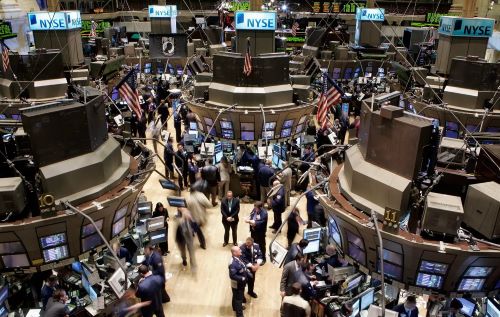

Market makers are the unsung heroes of financial markets, ensuring smooth and efficient trading. By continuously buying and selling, they provide essential liquidity, stabilize prices, and keep the markets active. This article delves into the pivotal roles they play, exploring how they enhance market functionality and stability in an ever-evolving financial landscape. Visit proficator.org if you are looking for a free and easy-to-use website that helps people find an education company to start learning about investments.
Enhancing Liquidity: The Vital Function of Market Makers
Market makers play a key role in keeping markets liquid. Imagine you’re at a busy bazaar. There’s always someone ready to buy or sell, ensuring you can trade your goods quickly. Market makers are like those ever-present traders. They stand ready to buy and sell at any time, helping traders complete their transactions without delay.
But how do they do it? Market makers post bids and ask prices. The bid is what they’re willing to pay for a stock, while the ask is the price at which they’re willing to sell. The difference between these prices, called the spread, is how they make their money. By continuously offering to buy and sell, they create a constant flow of trades. This activity keeps the market humming and prevents it from drying up.
Here’s a real-world example: During the 2020 pandemic, many investors panicked and wanted to sell their stocks. Market makers stepped in, buying these stocks even when it seemed risky. Their willingness to trade helped stabilize the market and provided liquidity when it was needed most.
Market makers don’t just benefit individual traders. Their role is crucial for the overall health of financial markets. By ensuring there are always buyers and sellers, they help maintain fair prices. This, in turn, makes the market more attractive to all participants, from small retail investors to large institutions.
Price Stabilization: Maintaining Market Equilibrium
Keeping prices stable is another crucial task for market makers. Picture a tightrope walker. Too much sway in any direction, and they fall. Similarly, if stock prices swing wildly, it can create panic and uncertainty. Market makers help keep these swings in check, acting like a balancing pole for the tightrope walker.
How do they achieve this? When prices move too far in one direction, market makers step in. If a stock’s price is plummeting, they buy shares to support the price. If it’s soaring too high, they sell shares to cool it down. This action helps prevent extreme volatility and maintains a more predictable market environment.
Consider the “Flash Crash” of 2010. In just minutes, the stock market plunged nearly 1,000 points, causing widespread panic. Market makers played a pivotal role in restoring order. By buying undervalued stocks and selling overvalued ones, they helped stabilize prices and bring the market back to equilibrium.
Market makers also aid in price discovery. This process helps determine the fair value of a stock based on supply and demand. By constantly posting buy and sell prices, market makers provide essential information about what a stock is worth at any given moment. This transparency helps investors make informed decisions and promotes trust in the market.
Do you ever worry about sudden market drops? Knowing that market makers are there to catch falling prices can offer some peace of mind. They act as shock absorbers, reducing the impact of rapid price movements. This can be especially reassuring during times of market stress.
Technological Integration: The Modern Market Maker’s Toolkit
Today’s market makers rely heavily on technology. Think of them as pilots using sophisticated navigation systems to guide their planes. Without these tools, flying would be much riskier and less efficient. For market makers, technology enhances their ability to trade swiftly and accurately.
One major advancement is algorithmic trading. Market makers use complex algorithms to execute trades at lightning speed. These algorithms analyze vast amounts of data, spotting trends and making decisions in milliseconds. This speed is crucial, as even a slight delay can mean missed opportunities or losses.
High-frequency trading (HFT) is another tool in the modern market maker’s kit. HFT involves executing a large number of trades in a fraction of a second. This approach can capture small price differences that would be impossible to exploit manually. While HFT has its critics, it’s undeniably effective in providing liquidity and narrowing spreads.
Artificial intelligence (AI) and machine learning are also revolutionizing marketmaking. These technologies allow market makers to predict market movements with greater accuracy. By learning from past data, AI can identify patterns that human traders might miss. This predictive power helps market makers stay ahead of the curve and make more informed trading decisions.
For example, during periods of high volatility, AI can quickly adapt to changing market conditions. It can adjust trading strategies in real time, ensuring that market makers remain effective even in turbulent times. This adaptability is key to maintaining liquidity and stability in fast-moving markets.
Conclusion
Market makers are vital to the financial ecosystem, offering liquidity and stability. Their innovative use of technology and adaptive strategies ensure robust market performance. As markets evolve, the indispensable role of market makers in maintaining order and fostering trust remains critical for investors and traders alike.


